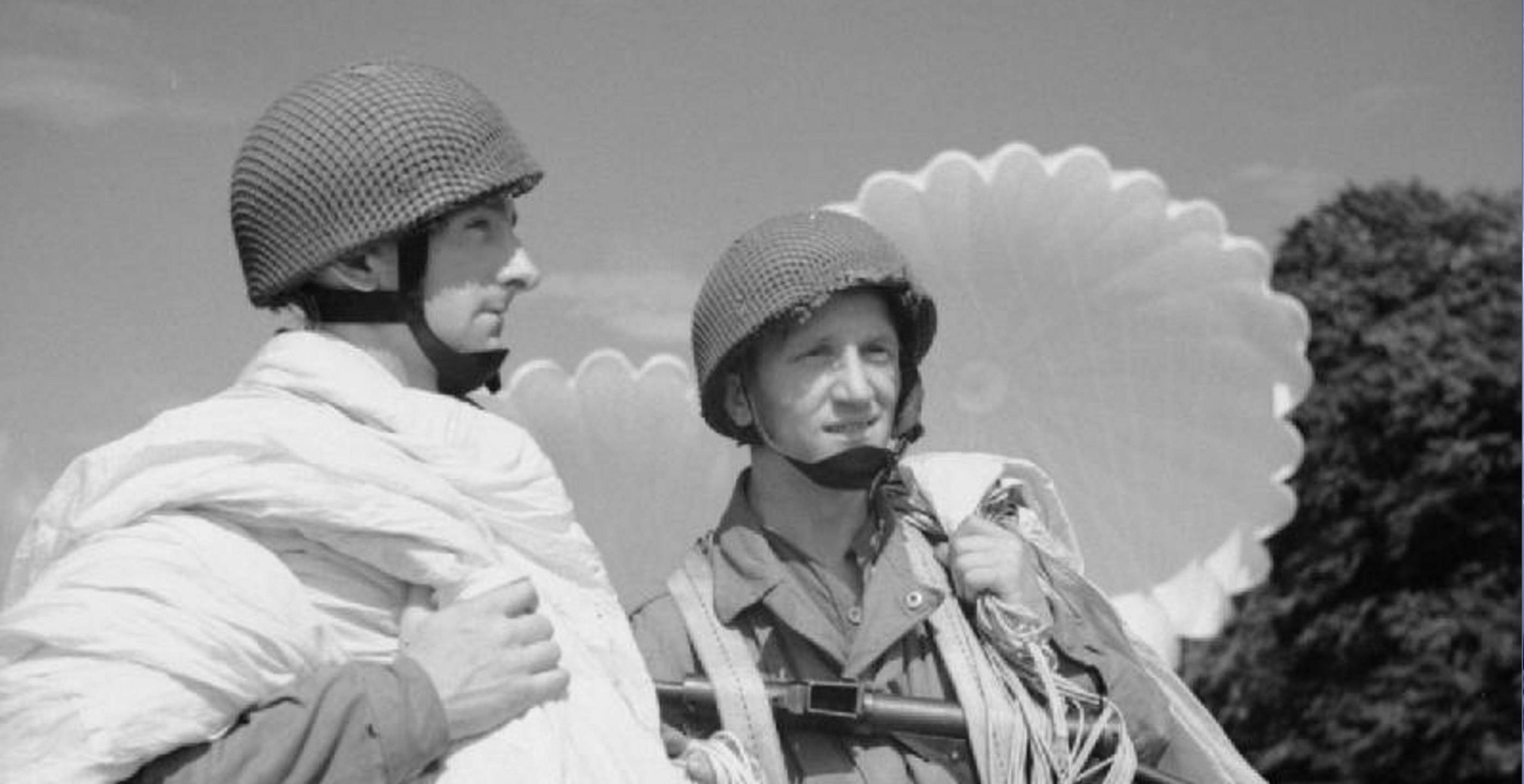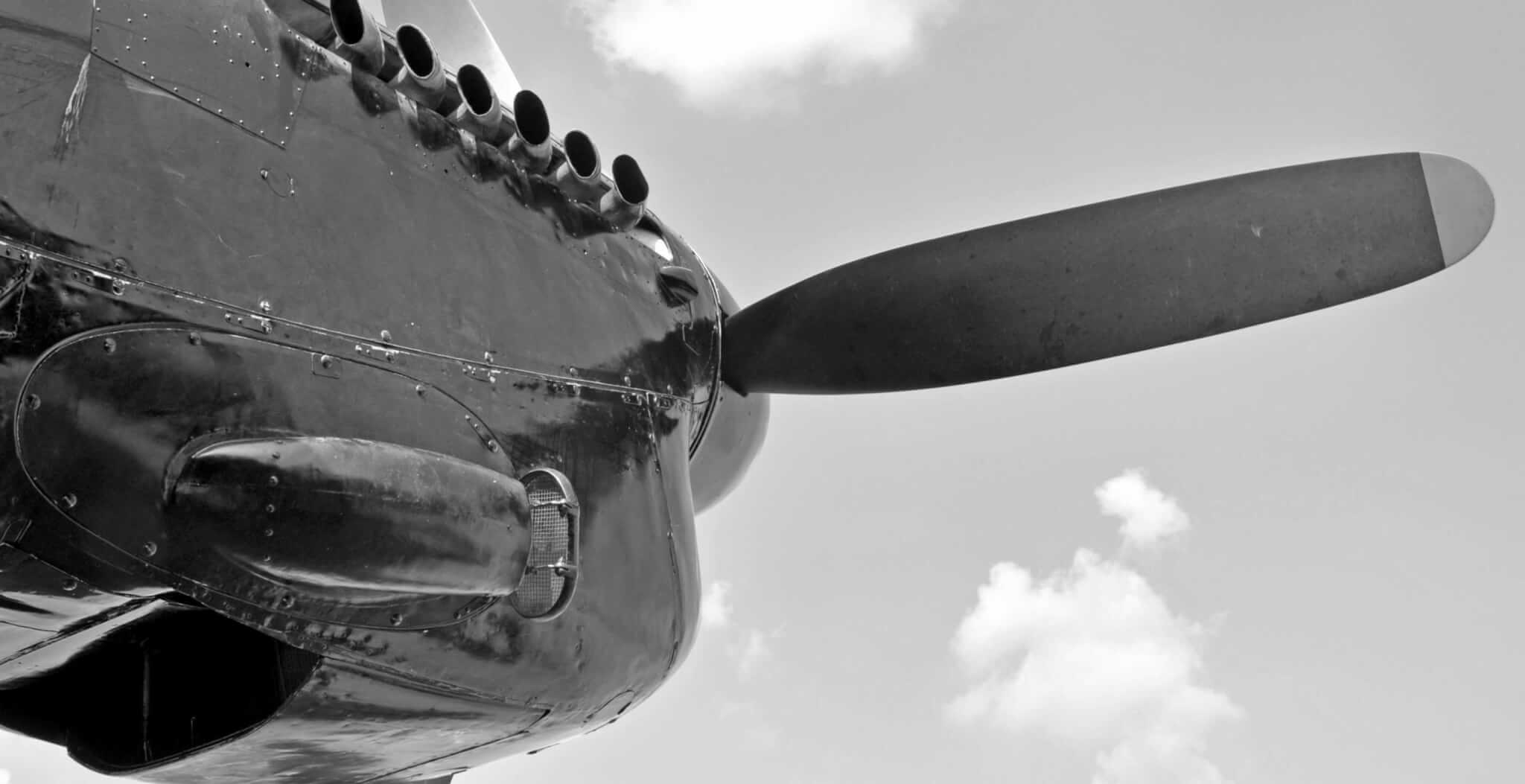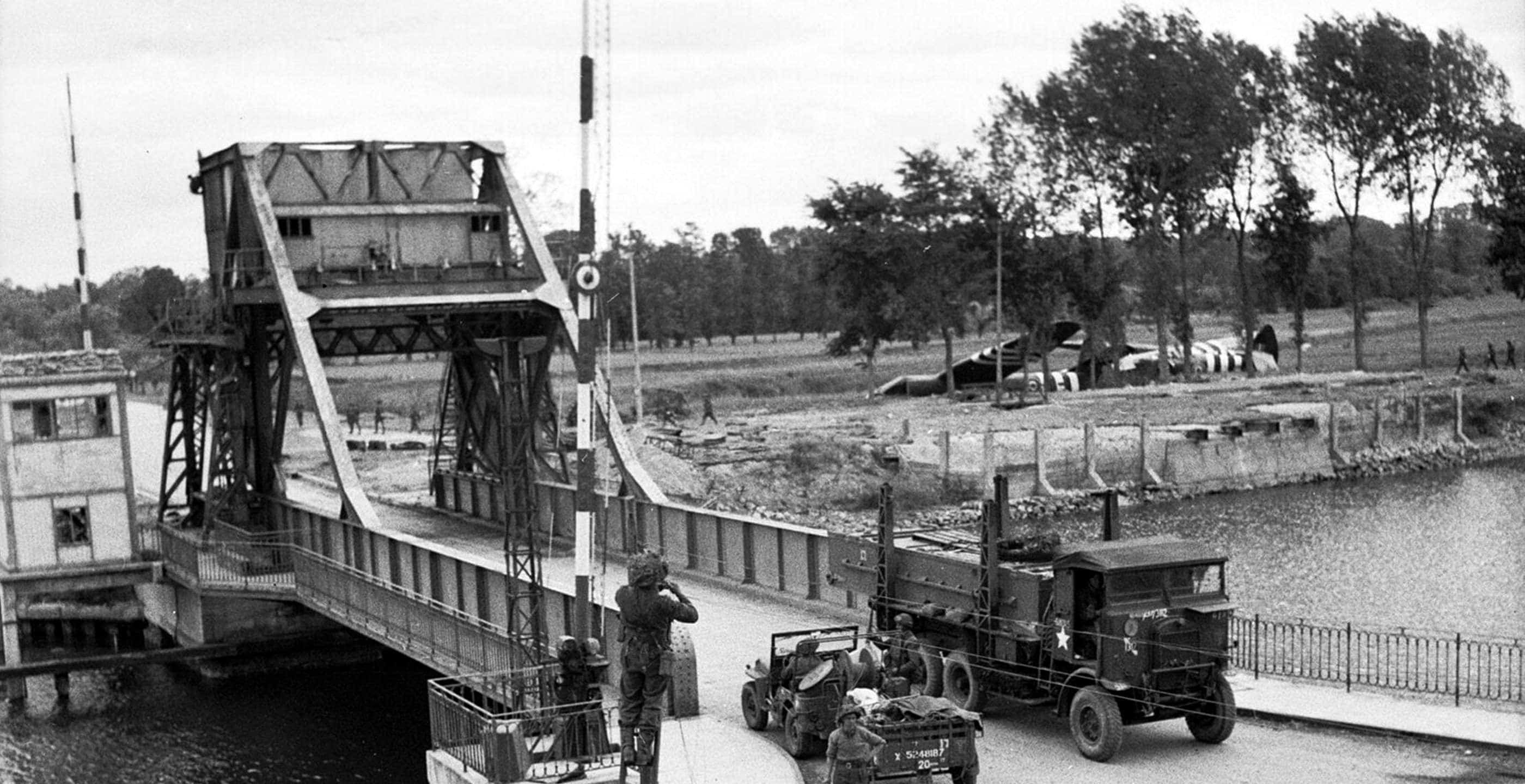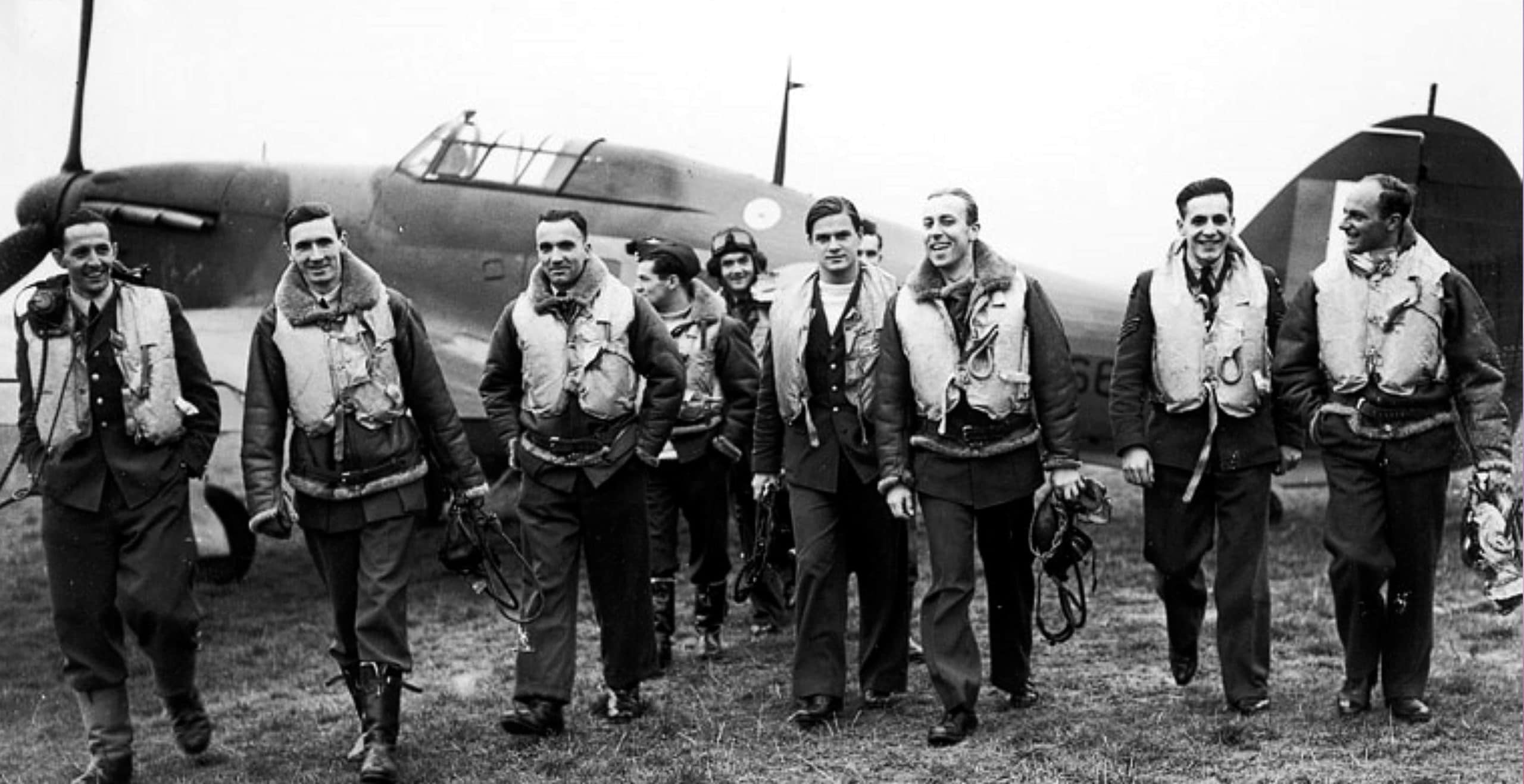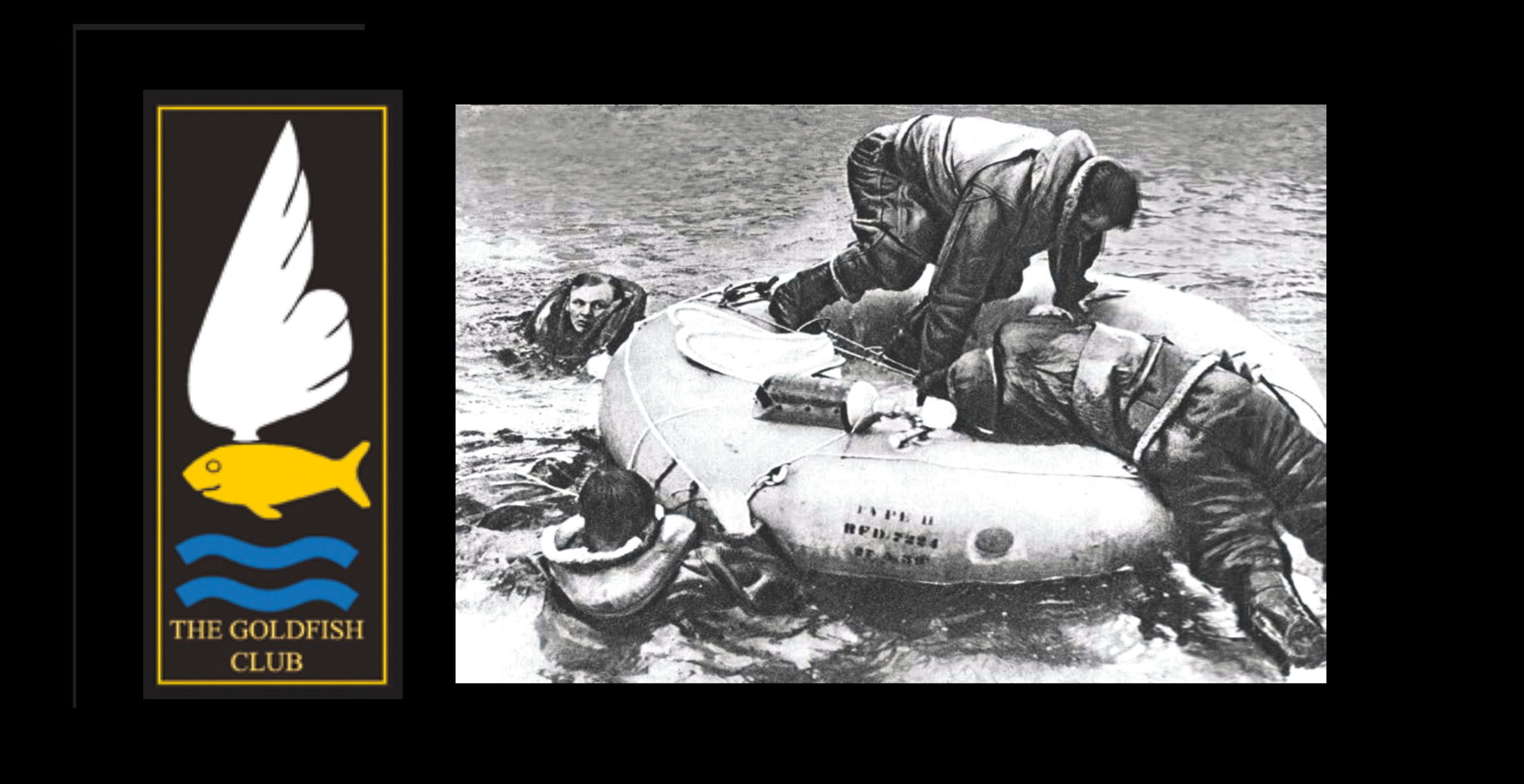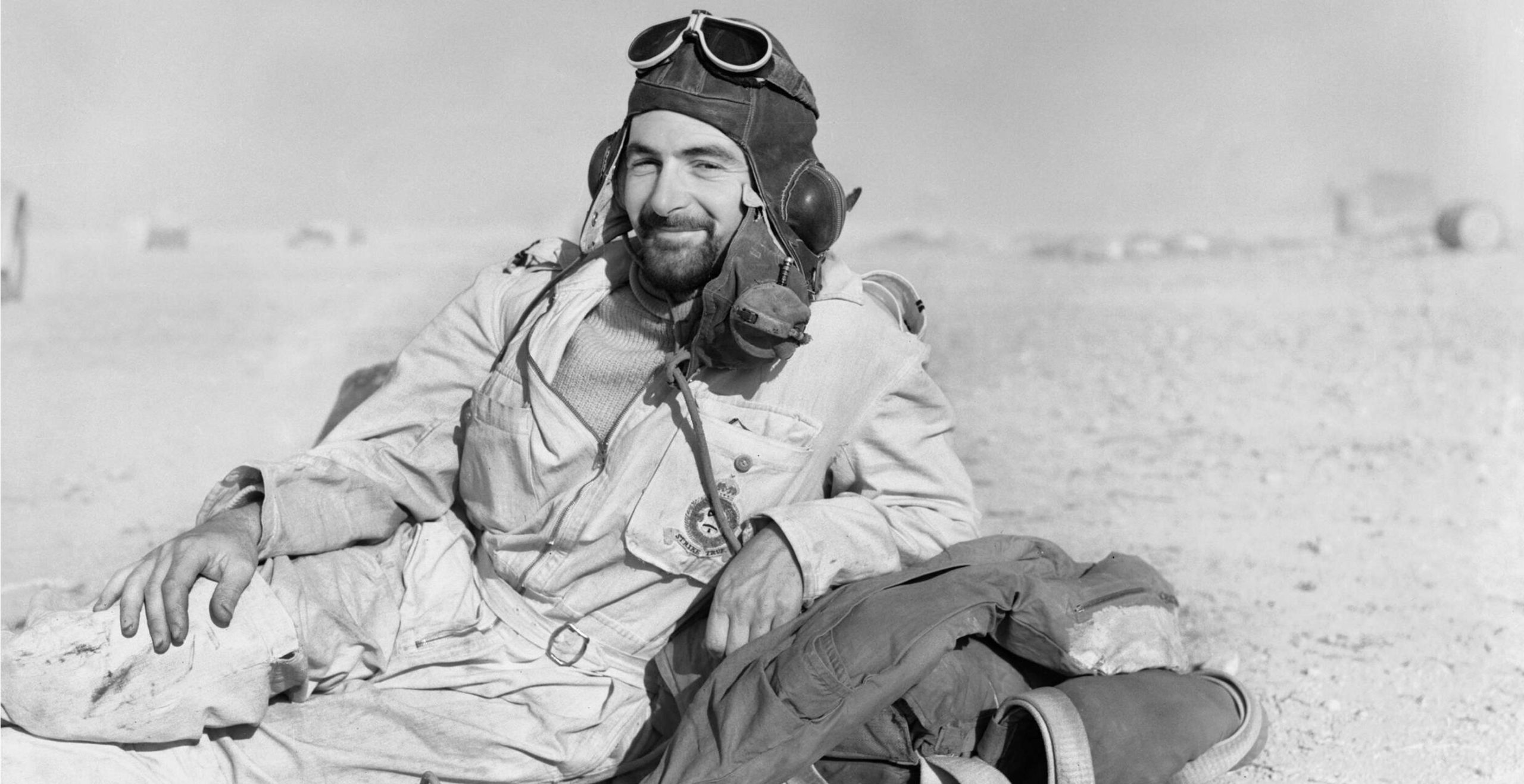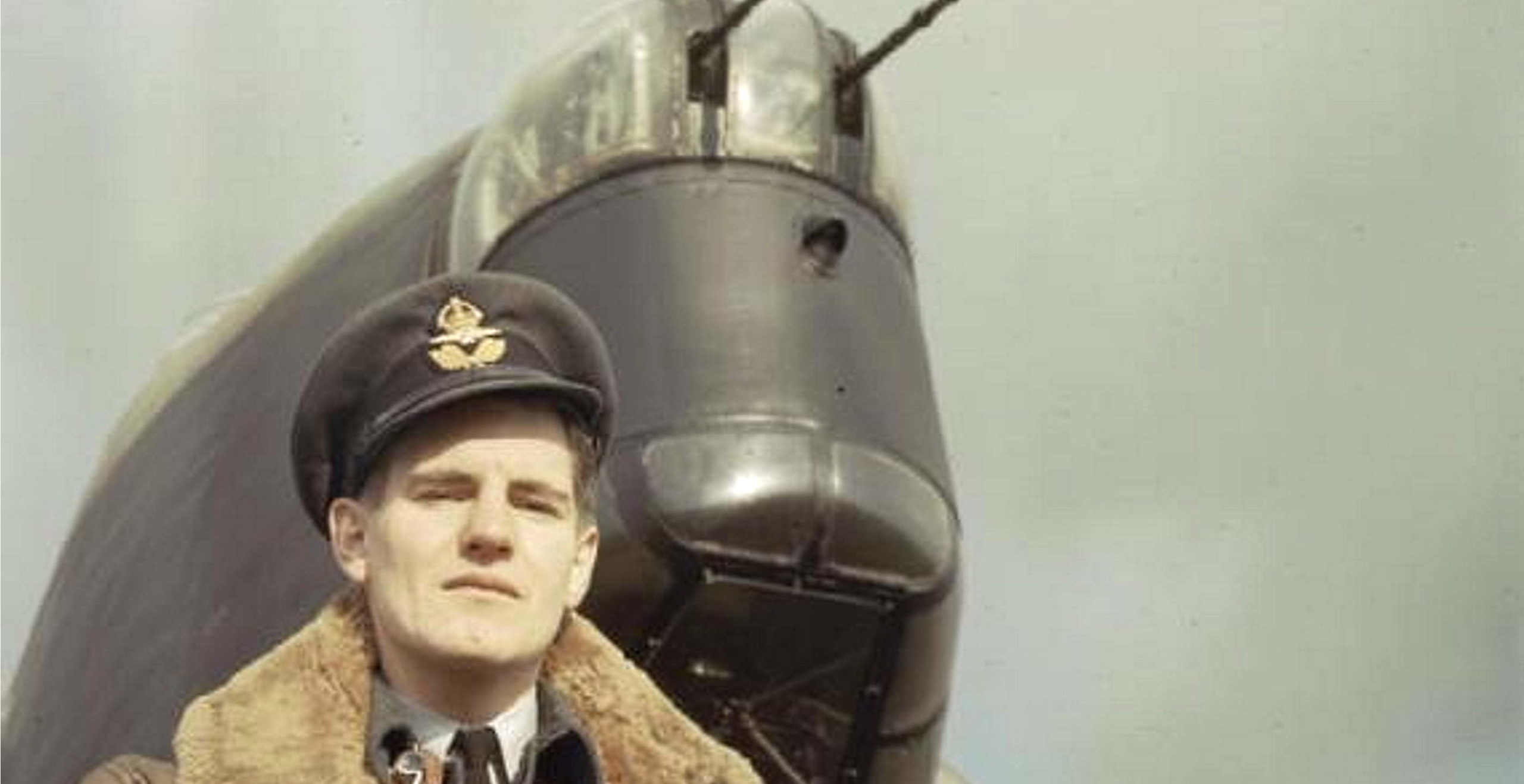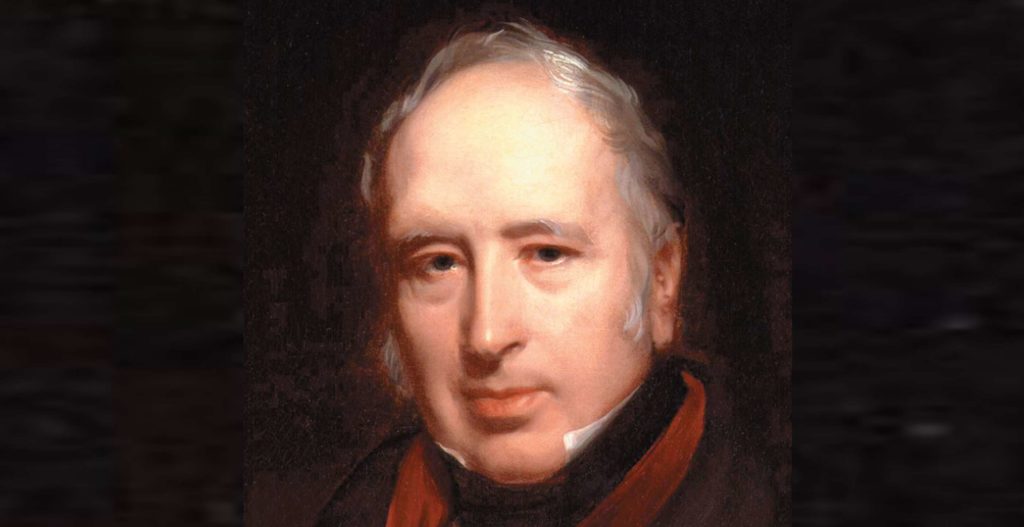The Caterpillar Club was formed in 1922, a full twenty years before The Goldfish Club. The exact story of how the club came to be is uncertain, but there are two stories that explain its founding, and both involve Lieutenant Harold R. Harris.
Harris had been forced to ditch his aircraft and was the first recorded man whose life had been saved by a freefall parachute. He was forced to abandon his Loening PW-2A monoplane fighter plane during a military exercise on 20th October 1922 at McCook Field, Ohio. This is actually very near where the Wright brothers flew their test flights.
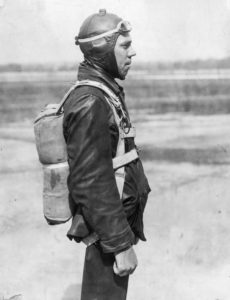 Floyd Smith wearing the “Type A” parachute at McCook Field in Dayton, Ohio, in May 1919. Image courtesy of the National Museum of the United States Air Force, Wright-Patterson Air Force Base, Ohio.
Floyd Smith wearing the “Type A” parachute at McCook Field in Dayton, Ohio, in May 1919. Image courtesy of the National Museum of the United States Air Force, Wright-Patterson Air Force Base, Ohio.
The first story of the club’s inception is that the club was created thanks to a chance meeting between two airmen, the aforementioned Harris, a Lieutenant Frank B. Tyndal and Leslie Irvin. Leslie Irvin was the founder of Irving Air Chutes. The three men met for drinks at McCook field and were swapping stories about all of the lives that had been saved by parachutes, including Harris’s, and thus the idea for a club for these survivors was formed.
It is rumoured that Harris said at the time –
“We ought to start a club for guys like us. As time goes by more and more fliers all over the world will owe their lives to your chutes, it should be quite a thing in years to come.”
The second story, is that after Harris had survived his bail out, two reporters from the Drayton Herald who had written about his experience, realised it would become a lot more common and subsequently suggested the club. Either way, Irvin thought it was a great way of publicising the life-saving qualities of his new parachute design whilst simultaneously celebrating the survival stories of those forced to use them in the direst of circumstances.
Although Harris was credited as being the first man to bail out in an emergency with the new parachute design, the actual first man to have used such a parachute to make a safe landing after ditching from a stricken aeroplane was William O’Connor. He parachuted to safety in a field in Ohio on August 24th 1920, a full two years before Harris. However, his jump didn’t garner any publicity at the time so it was not officially recorded.
The first of these new parachutes was made in 1919 on an old sewing machine by Irvin himself. He was a former stunt man and conceptualised the idea of a free fall parachute that could be opened once an airman had left his plane. Previously, this was impossible, and if the plane was in a spin, the pilots would not be able to open their parachutes at all. On 19th April 1919 Irvin tested his idea himself, jumping from a plane wearing his new parachute design, and walking away with just a broken ankle for his efforts. He therefore decided that these new parachutes would be a huge success.
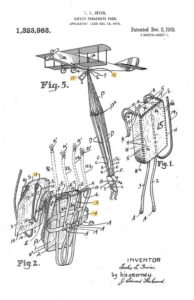 Leslie Irvin parachute patent, 1918
Leslie Irvin parachute patent, 1918
He was right. By the middle of the Second World War the company were producing up to 1500 parachutes a week to keep up with demand and membership of the Caterpillar Club was up to 34,000 people.
The only requirement for admission into the club is that you must have used an Irvin parachute to escape safely from your aircraft. Recreational jumps, where you intentionally leave the aircraft, for example skydiving or military training exercises, do not count. In fact, the Caterpillar Club is known as the club that no-one wants to join, and that those who do, do so by accident! This is a fundamental tenet of club membership.
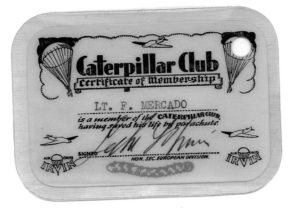 Caterpillar Club membership card. Licensed under the Creative Commons Attribution-Share Alike 3.0 Unported license.
Caterpillar Club membership card. Licensed under the Creative Commons Attribution-Share Alike 3.0 Unported license.
The club is open to both military and civilian members from any country in the world. By 1939 membership of the club had risen to around 4000 people from over 50 countries worldwide. The membership today is around 100,000, which is a lot of lives saved. When you apply for membership your credentials are been verified by the Irvin company and you are then sent an engraved golden pin of a caterpillar as well as a membership badge and certificate.
The golden caterpillar used in the pin design is extremely significant. Not only does it represent the silkworm who spins the silk threads that the original lifesaving parachutes were made from. It also signifies the fact that as caterpillars have to escape their cocoons in order to survive, and so too do the airmen in trouble when they escape their aircraft. The club’s motto is, in fact: “Life depends on a silken thread.”
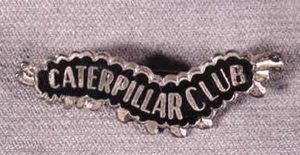 Caterpillar Club badge.
Caterpillar Club badge.
There are some very famous members of the Caterpillar Club including astronaut John Glen, trans-Atlantic pilot Charles Lindbergh and Lord Douglas Hamilton. The first recorded woman to be admitted to the club was Irene McFarland on June 28th 1925. McFarland was a stunt pilot in an aerial circus and was flying in just such a show in Cincinnati when her plane got into trouble. Forced to abandon her aircraft, her first parachute failed but luckily her reserve opened.
The youngest member admitted to the Caterpillar Club is Ruari Tait who joined relatively recently in 2014 at just 12 years old. He was flying with his father in a glider over Aberdeenshire where they suffered a mid-air collision with another glider and were forced to bail out and use their parachutes. Both survived and Ruari went on the achieve his solo glider pilots’ licence at only 14.
Some other parachute companies such as Swatlik Parachute Company and the Pioneer Parachute Company have implemented similar clubs, although Swatlik’s pin is black and silver. Probably the most famous member of the Swatlik Caterpillars is former US president George Bush, who used a parachute to bail out of his stricken aircraft into the Pacific Ocean on September 2nd 1944; he was later rescued by a US submarine.
Below is a poem written by POW Leland Potter, an American Air Force Sergeant who was shot down over Germany on November 21st 1944. He was captured but later returned to US military control at the end of the war in 1945. He clearly had respect for his parachute and where it came from.
By Terry MacEwen, Freelance Writer.
Published: April 21st 2022.
